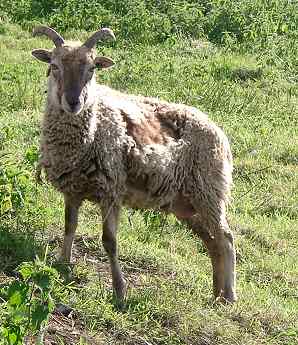
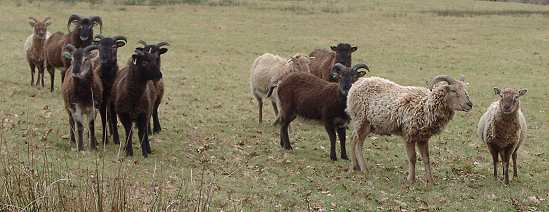
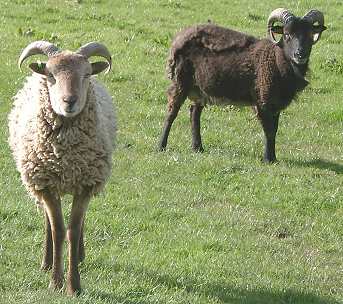
Wool was the most common material used for clothing, alongside linen made from the flax plant. Soay are the most prmitive breed of sheep having been isolated on the uninhabited Scottish island of Soay in the St Kilda group and therefore are close to the unimproved sheep of the early Anglo-Saxons. They strongly resemble the sheep depicted in the 'Labours of the months' MS (BL Cotton Julius A. vi - May).
|
|
 |
 |
|
Soay don't need to be sheared as they shed their fleece naturally in the spring. Collecting the wool for spinning is a simple matter of pulling the loose wool out.
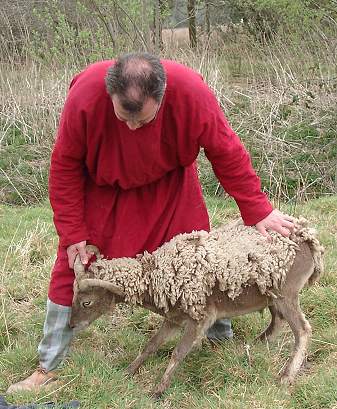 |
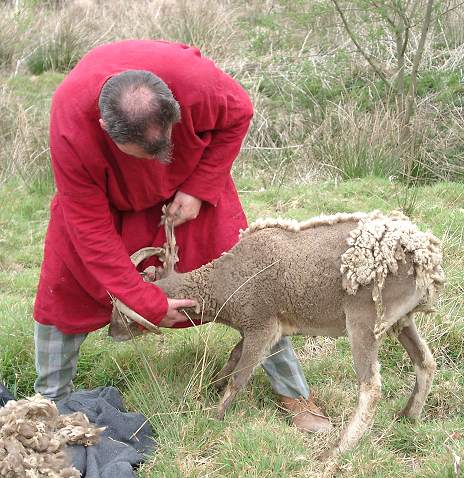 |
|
Catch your sheep! The wool is starting to fall naturally.
|
The wool comes away easily leaving the thin undercoat.
|
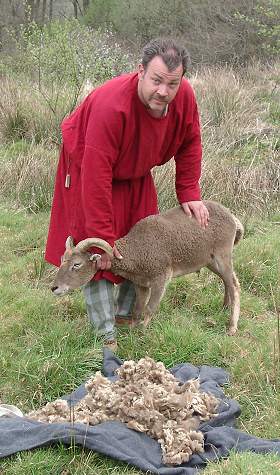 |
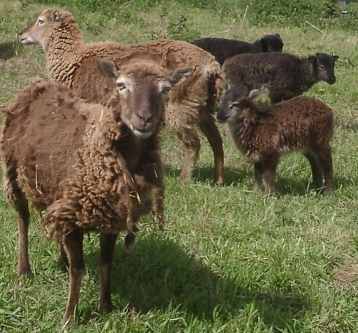 |
|
The finished job and the fleece for spinning.
|
Soay sheep come in a range of colours from pale very
dark brown, occasionally pure black. This would have given quite a range
of colours and patterns for clothing even without dying the wool.
|
Spinning
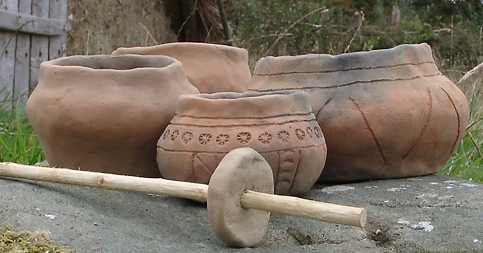 |
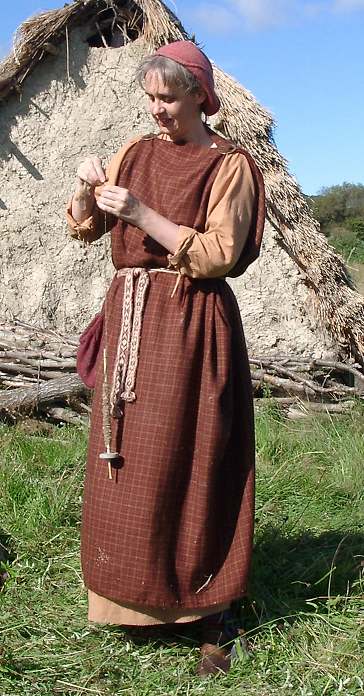 |
|
The fleece is spun into thread using a drop spindle,
pictured above with some pots.
|
Spinning thread was a constant task for Anglo-Saxon
women, so much so that many were buried with their spindles, presumably
so that they could continue spinning in the afterlife.
|
All our breeding flock are registered with the Rare Breed Survival Trust. If you would like to know more about Soay sheep, or are interested in purchasing stock, please contact us.